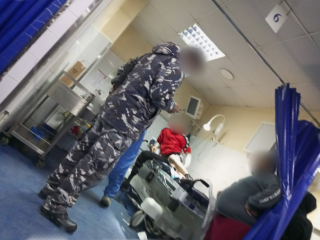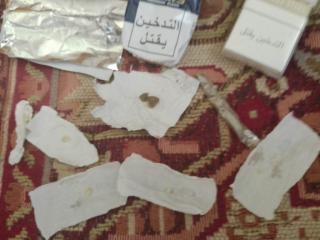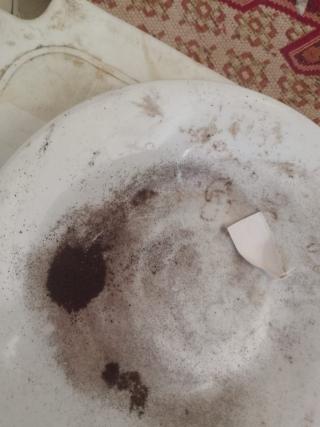- Policy Analysis
- Fikra Forum
A Pathway to Addiction: Tracing Drug-Trafficking Networks in Lebanon’s Roumieh Prison
Roumieh’s drug networks have been an ongoing and pervasive challenge for Lebanon.
Over the course of a single year in Lebanon’s Roumieh prison, an upstanding young Syrian doctor referred to here as “Maher”— detained in an attempt to join his family in Lebanon—became a patient in need of rehabilitation for drug addiction. Maher’s descent into drug use while in prison exemplifies the much larger problem of drug smuggling and consumption for which Roumieh prison is becoming increasingly notorious in Lebanon. Lebanon’s largest prison is located in Roumieh, Matn District, east of Beirut, and usually houses about 5,500 inmates. Considered one of the most overcrowded prisons, Roumieh houses both pre-trial prisoners and those who have been convicted. It has separate sections for young teens, women, and men. Given its large size and testimonies as to the prison’s pervasive drug networks, this prison is becoming a contributor to Lebanon’s struggle with drug addiction in its own right.
From Medicine to Addiction
In April 2017, on the road connecting the town of Shebaa and Beirut, Maher and his two friends were stopped at a mobile checkpoint by Lebanese intelligence agents. They had entered Lebanese territory from Beit Jann through one of the illegal crossing points in Jabal al-Sheikh in hopes of reaching Beirut, where Maher’s family lived. Maher and his friends had arrived in coordination with smugglers inside Syria who had intended to take them from the town of Beit Jann to the area around Shebaa in Lebanon. The plan was that other smugglers would then take them on to Beirut where Maher’s family lived.
Maher described his arrest: “We entered Lebanese territory through the town of Beit Jann on the night of April 4 and stayed at the house of one of the smugglers who was working with the Syrian smuggler until dawn that day. Then we left that house for Beirut in his car. Although we made it through the entrance of the town, we were stopped at a mobile checkpoint run by the Lebanese intelligence agency. They took us all to Shebaa police station for investigation after it was revealed that we had entered Lebanon illegally several hours before.”
Maher and his friends spent several hours in the Shebaa police station before an order was issued to take them to Roumieh prison while the charges of secretly crossing into Lebanon were investigated. Though many others who had been arrested for the same crime were released after only a few days, Maher believed that he was kept for much longer because “the military operations taking place in and around Beit Jann at that time made people more suspicious of us.” Maher was even accused of entering through Israel, since his crossing point was located near the border triangle between Syria, Lebanon, and the Golan Heights. During a full year of detention in Roumieh, Maher’s life fundamentally changed “from being a doctor treating the ill and the injured in Syria, to a prisoner with no options.” With “no space to do the right thing,” Maher fell into using hashish like the other prisoners.
The former director of Lebanese prisons and advisor to Lebanon’s Minister of Interior, Brigadier General Ghassan Othman, has suggested that the prevalence of drugs in Roumieh prison is not a new phenomenon, but that security forces tasked with protecting the prison have fully carried out their duties in tamping down prisoners’ access to drugs. “Although some attempts to smuggle in drugs were successful,” Othman said, “security forces seized most of these substances.”
Still, recent events alongside prisoner and prison officer testimony suggests that Roumieh’s drug problem is far from under control. In March 2023, drug smugglers were so bold as to attempt using a drone to transport illicit substances over prison walls, including 74 narcotic pills and a white substance, along with a mobile phone and USB flash drive. Two days prior, the inspection team of the central prison squadron caught a woman attempting to smuggle a quantity of hashish professionally wrapped and hidden inside her body while she was visiting her son, a detainee held on drug charges. Less than a year earlier, in August 2022, a prisoner named Serge al-Mulush was brutally murdered in front of other prisoners by Hanna Abd al-Ahad, reportedly due to a dispute about drugs. Shocking incidents like these leave many pondering the same questions that al-Mulush’s relatives asked: How did the drugs and knives get in? Where were the guards during the murder? Yet answers are hard to come by.
Serge al-Mulush - photo courtesy of Serge al-Mulush's family
Roumieh’s Culture of Drug Use
Early on in his time as a prisoner, Maher realized that drug dealing and consumption was a way of life in Roumieh. “It could be difficult to get the right medication for a sick prisoner… but finding hashish, Captagon, or other drugs wasn’t hard at all,” he recalled. He explained that there was a social protective factor to drug use: “Either you’re one of them… or you become their enemy. . . There’s no space for doing things right in there and no use in prisoners preaching to each other. Either you’re one of them and you live among them, or you reject how they behave and become their enemy just because of that.”
The mother of “Ali,” another prisoner, echoed Maher’s description of pervasive drug use in Roumieh. She described how her son had changed during the ten months he spent in Roumieh prison due to charges unrelated to drug use: “My son was put in the prison on burglary charges, and he was supposed to be released on bail after three months. However, I couldn’t pay bail because of my financial situation, so he remained in prison for ten months. During this time, he became a drug addict despite the fact that he’d never done drugs before his imprisonment for burglary, the effects of his newfound addiction profoundly impacted his physical and mental state... He used to be very calm,” Ali’s mother explained, “and now he’s quick to anger and very hostile.”
Umm Hussein, the mother of a prisoner who had been imprisoned due to drug use, said that she was afraid of sending money to her son in Roumieh despite his urgent and incessant requests was because she thought any money given to her son would go towards buying drugs. “Hussein and his friends were put in prison for drug use, but they became much more seriously addicted inside Roumieh,” she claimed. “We can’t stop them from using, but I can prevent him from having access to money to buy more.”
One method of drug transportation is through inmates who have access to outside hospitals. Whether receiving periodic treatment or regular checkups, these patients can pick up drugs while they are at the hospital and then smuggle the substances inside the prison upon their return. The author obtained exclusive photos of one prisoner with an amputated foot who, when going to the hospital for a checkup, was able to hide illicit substances on the side of his pants where his foot had been amputated. Thus, he avoided inspection and removed the drugs once he was back inside the prison. In several more extreme cases, prisoners visiting an outside hospital would swallow drugs that could be removed from their stool later on.
Others indicated a second step of this process was grinding up the pills and placing them in a towel until the substance dried. The contents were then placed in pots for cooking and then extracted and put into bottles for selling and dealing. Men are not the only ones involved in these smuggling operations. According to prisoners, there are also many women who are transporting drugs during their visits to the prison, often by wrapping the substances and placing them inside their reproductive organs. These women then take the substances out once inside the prison and leave them in designated locations for dealers to pick up after visiting time had ended.
Tracing Drug Distribution Networks
Gang Networks: Within the prison itself, testimony from numerous sources suggests that there are certain prisoners who are the main actors in the drug trafficking networks, including those who come from families with a long history of drug trafficking. One of the security officials in Roumieh noted that rivalries between the different drug-dealing gangs in the prison have taken on a life of their own. These gangs operate with complete freedom and control, not only selling a variety of illicit substances but also demanding large sums of money from prisoners in exchange for access to beds, food, cigarettes, and more under the guise of “protection.” These gangs even control access to the calling cards that prisoners use to reach their families, an invaluable commodity for Roumieh’s occupants with a black market price that can reach 100,000 LBP (approximately 70 USD), compared to an estimated 15,000 LBP (approximately 10 USD) outside the prison.
Those who refuse to comply with the gangs’ systems are reportedly subjected to beatings. Indeed, an official has stated that most of the fights that take place between “prison gangs” and other prisoners are a result of disputes over drug payments and refusals to comply.
Security Guard Assistance: Those interviewed argue that these dynamics are playing out with the full knowledge—and often to the benefit—of key Roumieh officers and staff members. Maher noted that the members of these gangs enjoyed protection from officers and gendarmerie, who shared the money that they collected from prisoners.
According to Maher, “There was no one going after these issues, no accountability for drug users. Quite the opposite—it was very easy to find dealers and the ones who were bringing those substances into the prison cells. Usually there was a guard among the dealers in case there was any dispute about distributing the substances to the rest of the prisoners. They were overseeing and benefitting from this.”
Moreover, Maher argued that the dealers inside the prison were just involved after the drugs made it inside the prison cells, and that the main actors facilitating the entry of the drugs into the prison were the officers and agents involved in smuggling the substances in from the outside, either directly or via the family and friends of dealers who made regular visits.
Umm Hussein, among others, expressed anger that prison staff were in her mind undoubtedly aware of and even participating in the drug smuggling—“There is no doubt that people are helping get these poisons into the prison, and it’s no secret that prison officers and staff are involved in these operations. Why do the security forces show the media the knives that they’ve confiscated during their raids of prisoners’ rooms in Roumieh, but not the drugs, which are more dangerous? Do the security forces not dare to show the drugs inside that prison? Or is it the “big shots” who stop them from doing so?”
Umm Hussein’s question touches on a key aspect of the widespread drug problem in Roumieh prison. Though the prison’s drug networks have several methods for getting the drugs inside prison walls, current and former prisoners along with security officials have specifically pointed to the so-called “drug highway” facilitated by some prison officers. The former director of prisons Ghassan Othman did not deny that prison officials had facilitated the smuggling of forbidden substances into the Roumieh prison. However, Othman also asserted that this was nothing unusual and that those responsible had been held accountable.
However, sources from inside the prison claim that officers using their own cars, which are not subject to inspection, have allowed them to easily transport substances into the prison. In other cases, they say that certain names are given to officers at the prison gates in order to facilitate the entry of visitors carrying drugs, with only a brief inspection provided as a formality.
These sources also state that there are various mechanisms for coordinating among officers and other individuals involved in facilitating smuggling operations. These mechanisms include direct agreements within the prison and other arrangements with leading figures in networks outside. Information obtained by the author suggests that there was a core group of officers and other agents involved in the drug smuggling operations in Roumieh, including those whose positions would facilitate this role.
Of course, the extent to which some prison officials and guards have a choice in this alleged participation is up for debate. According to several sources, many agents had been forced to cooperate with the smuggling networks under threat from dealers with strong ties to political and security figures in the outside world. According to one agent, those involved with drug trafficking gangs in Roumieh prison would pick fights with the gendarmerie and internal security forces who refused to cooperate with them—individuals were subjected to threats, kidnappings, and beatings if they attempted to thwart a drug smuggling operation. With security officers and prison staff receiving no more than 50 USD per month, the Syrian doctor Maher argued, they may see no other way. Yet the intertwined involvement of security officials and prison staff speaks to the sheer scale of the drug problem in Roumieh and the many dangers that accompany it.
Rot at the Core
That officers are involved in facilitating Roumieh’s drug trade should not be surprising given the ongoing struggles Lebanon has had with the leadership of its anti-drug units. Corruption is an issue that goes all the way to the top: Lebanon’s very own head of the anti-drug trafficking office, Colonel Henry Mansour, was arrested and ultimately convicted of two cases related to the disappearance of large quantities of cocaine from the repository belonging to the anti-drug trafficking office, which became known as the “Hobeich storeroom scandal.”
A report in late July 2020 had suggested that cocaine previously seized by the anti-drug trafficking office had then been sold to Ali Monzer (Abu Salle)—who became notorious for kidnapping a Saudi citizen and was arrested in 2019 for drug trafficking—in connection with the Roumieh prison drug network. Four other military figures were convicted in the same case.
Mansour was sentenced in mid-April 2021 to two months in prison and given a 1 million LBP fine after he was convinced by the military court of criminally violating regulations in the case of the missing cocaine. He was also convicted of abuse of authority and professional negligence. Four other military figures of varying ranks were convicted in the same case.
There was a similar drug trafficking case in 2015 involving the first military investigative judge at the time, Riyad Abu Ghaida, who terminated the military service of two internal security officers (one a colonel and the other a lieutenant colonel) on charges of overseeing the smuggling of large quantities of drugs into Roumieh prison. This occurred after they had been “provoked” to act by the supervisor of the juvenile detention building who had allegedly been aided by other prisoners. The drug ring unraveled after an officer was suspended and then arrested for refusing to continue participating due to his upcoming wedding.
Clearly, Roumieh’s drug networks have been an ongoing and pervasive challenge for Lebanon’s anti-drug trafficking officers. But until any institutional involvement is cleaned up, Roumieh will continue to serve as a factory for addiction instead of a means of tamping down Lebanon’s increasing drug addiction crisis.
Photos and videos were provided by prisoners interviewed by the author.






